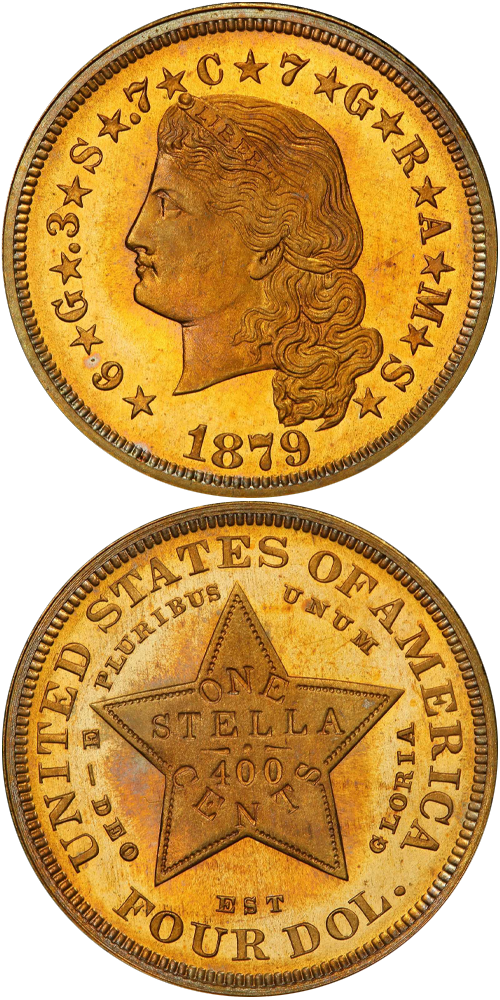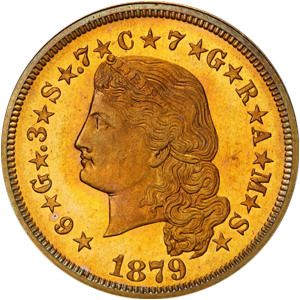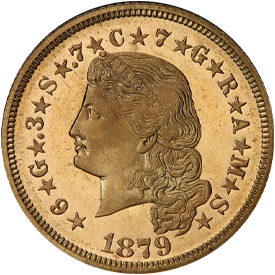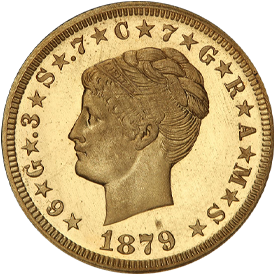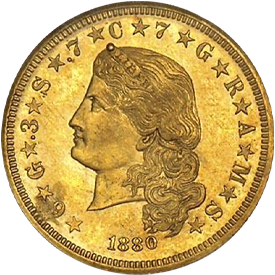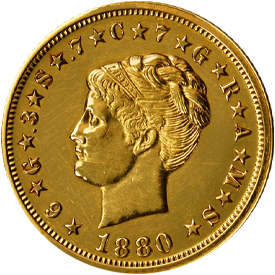| Flowing Hair Designed by: Charles E. Barber | Coiled Hair Designed by: George T. Morgan |
Four-dollar gold pieces, or Stellas, so-called from the five-pointed star on the reverse, are patterns, not regular coins. Stellas were produced in 1879 and 1880 at the suggestion of Hon. John A. Kasson, U.S. minister to Austria, who felt that a coin of this value would be useful for foreign travelers, as it could be readily exchanged for gold coins of approximate equivalent value in France, Germany, and other European countries. Indicative of its intended international nature, the obverse legend of the $4 piece expressed its metallic content in the metric system as follows: 6G, .3S, .7C, 7 GRAMS.
Two obverse designs were produced, the Flowing Hair type by Charles E. Barber (who was chief engraver of the Mint at the time) and the Coiled Hair type by George T. Morgan (he of 1878 silver dollar fame). On the reverse, instead of IN GOD WE TRUST, the motto appears as DEO EST GLORIA, or "God is Glorious." Mintages of the various issues are not known with certainty, but the Guide Book estimates 425 for the 1879 Flowing Hair (struck for distribution to members of Congress and the issue most often encountered) just 10 for the 1879 Coiled Hair, 15 for the 1880 Flowing Hair, and 10 for the 1880 Coiled Hair. Actual mintages were probably slightly higher than those figures.
While the Stella was a pattern, because it was struck in some quantity and by virtue of its longtime inclusion in the Guidebook of United States Coins, it has achieved the status of a “quasi-regular issue” similar to the 1856 Flying Eagle cent or some of the Gobrecht silver dollars of the late 1830s.
